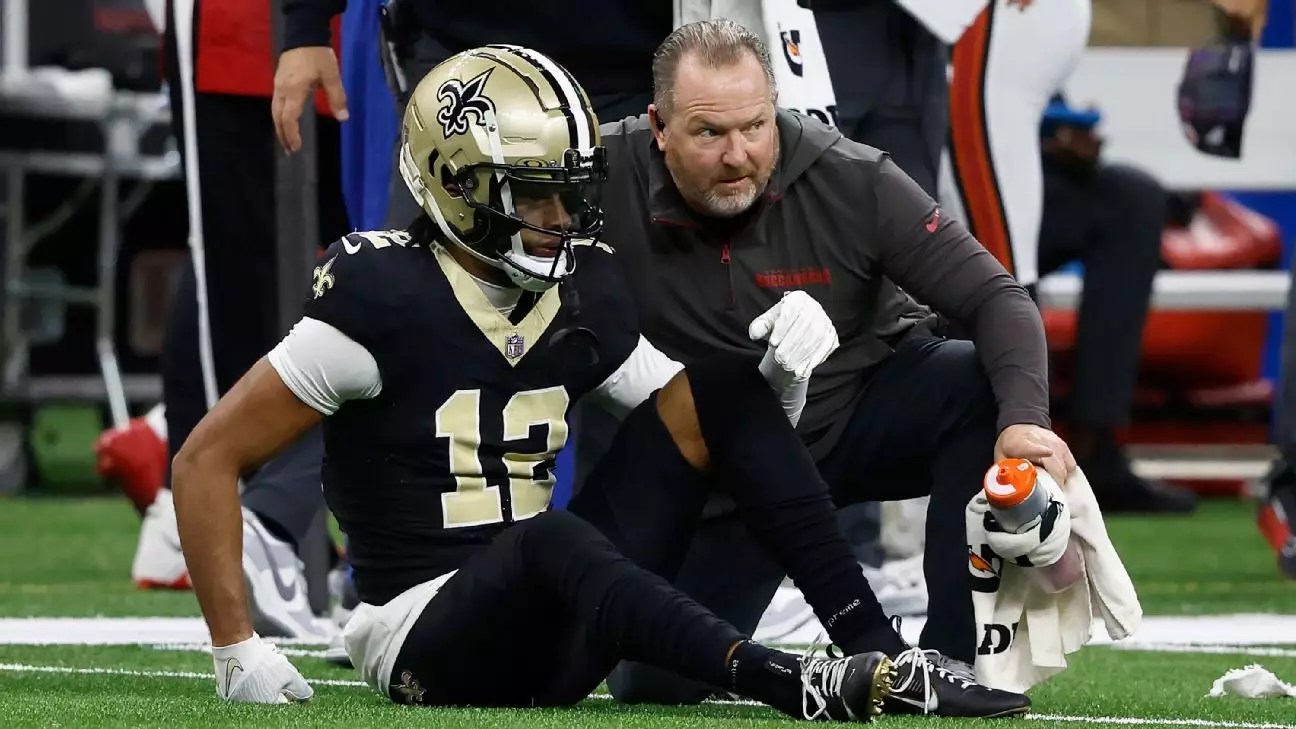In the high-stakes world of professional football, player safety is increasingly becoming a focal point for not only athletes but also coaches, team doctors, and league officials. Recent headlines have shone a light on this essential issue, particularly through the example of New Orleans Saints wide receiver Chris Olave. After suffering a concussion in Week 6, Olave has been contemplating the use of a Guardian Cap, a protective padding worn over the helmet designed to reduce the severity of head injuries during games.
The Guardian Cap has emerged as a topic of discussion within the NFL, especially in light of the alarming uptick in concussions among players. At a league meeting earlier this year, NFL Commissioner Roger Goodell touted a remarkable statistic: the use of these caps has led to a 52% reduction in concussions during practices. This announcement has prompted the NFL to mandate that players wear the caps during practice sessions, while allowing them the autonomy to wear them during games. This empowerment reflects a growing acknowledgment that player safety should be prioritized without compromising competitive spirit.
Chris Olave is not new to the risks associated with head injuries; he has a concerning history that should not be overlooked. In his rookie NFL season in 2022 alone, he sustained concussions that sidelined him for two games, immersing him in a palpable anxiety surrounding his health. The most recent concussion occurred during a Week 6 clash against the Tampa Bay Buccaneers, following a helmet-to-helmet hit that left him momentarily incapacitated. These incidents illustrate the volatility of an NFL player’s career, serving as a grim reminder that games can be ended rapidly by a single impactful hit.
After his concussion in Week 6, Olave has expressed uncertainty over whether to don a Guardian Cap during the upcoming match against the Carolina Panthers. He acknowledged having worn the cap during practice but ultimately opted for a standard helmet during games. “I was considering last game, ended up going with the regular helmet,” he stated, embodying the internal conflict many players face: the desire for protection versus a commitment to performance. Despite this ambivalence, the concern for potential long-term health ramifications looms large, creating a dilemma that weighs heavily on many athletes’ minds.
Olave’s situation does not exist in isolation; in fact, many players across the NFL are wrestling with similar choices. For instance, Miami Dolphins quarterback Tua Tagovailoa has chosen not to wear the Guardian Cap despite his history of concussions, citing a personal comfort level and preference for his current helmet. Conversely, players like Tennessee Titans tight end Josh Whyle have adopted the caps during games, illustrating a fragmented yet critical commentary on the evolving nature of player safety in professional football. This variance in acceptance showcases the ongoing debate: how much protection is sufficient, and at what point does it become a potential hindrance to performance?
Chris Olave’s musings on the Guardian Cap bring to light the broader conversation about player safety in the NFL, highlighting the fine line between athletic performance and health concerns. As the league continues to combat head injuries, innovations like the Guardian Cap represent both progress and an ongoing challenge. Ultimately, while the reduction in concussions is a promising sign, individual decisions like Olave’s will dictate how effectively safety measures are integrated into the sport. Moving forward, both players and the league must engage proactively to ensure that player health remains paramount in the competitive landscape of football.


Leave a Reply